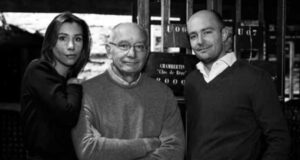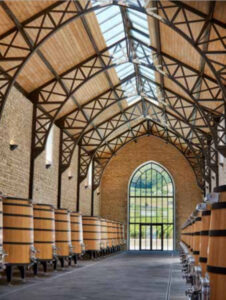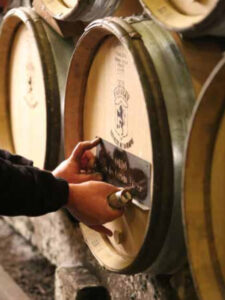1825-2025: 200 years of Faiveley in Burgundy
Behind the Scenes of the Domaine

We look at Burgundy as a region of small vignerons and négociants, we dwell on what we call “le réveil du terroir” or the taste of climats, leaving two aspects decidedly more submerged: the continuity of production and the changes in ownership that occur over time. There are not many Domaines that can boast 200 years of uninterrupted wine production in the Côte d’Or by the will of the same family. Domaine Faiveley is the one and only winery that can meet these characteristics. An exception that confirms the rule.
Today, the seventh generation leads an impressive historical-vineyard empire, built over time. The numbers are overwhelming: 140 hectares (70 in Côte Chalonnaise, 50 in Côte de Nuits and Beaune, and 20 in Chablis), 6 cru in Monopole, 25 hectares classified as Premier Cru and Grand Cru confirming an astounding viticultural heritage, which includes plots in the prestigious Corton Charlemagne, Clos de Vougeot, Corton Clos des Corton, Echezeaux, Vosne-Romanée, Gevrey-Chambertin, Clos de Bèze, Bienvenues-Bâtard-Montrachet, among others.
Erwan Faiveley, along with his sister Eve-since 2005 and 2014 respectively-are complicit custodians of this legacy that has helped build the image of Burgundy and that, as one can easily imagine, has grown over time. Erwan, after his studies in economics and a master’s degree, was given the keys to the winery when he was only 25 years old and, in just a few years, managed to totally overturn its image, starting by surrounding himself with trusted men, such as Bernard Hervet (historic general manager of Bouchard Père et Fils) and later, in 2007, Jérôme Flous, a technician with both viticultural and oenological skills. In 2018 he turned over the winery, opening a gateway directly onto the Nuits vineyards. A spectacle for visitors.
The work to be done is enormous. It starts with the vineyard: if the wines are to mirror the taste of the place, the vines must be healthy. A long project begins that will lead, in fifteen years, to the total conversion of all the vineyards to organic. Incidentally, the wines of the 2025 vintage will all be certified.
A goal achieved by starting with a total restructuring of the approach to work.
“Changing the winemaker is easy, changing the tête of the people working the vineyard is not: much more time is needed for training. To manage the vineyard grounds capillarly, I created work teams dedicated exclusively to the assigned plots; for this reason I doubled salaries. Every year we hire more than 200 people for the harvest”- said Jérôme during our visit to the winery.
For the past decade or so, Faiveley’s path of change has been clearly visible, operating with confidence and precision for wines with a contemporary taste and a marked adherence to the terroir. “Burgundy wants to pretend the technology doesn’t exist, but it is there. Hidden, but it is there. I would not, without timely control, be able to be precise and sure of the level of quality we achieve.” The production protocol involves two gentle pressings at controlled temperatures, separate vinifications, slow and natural infusions of tannins, again at controlled temperatures. This is followed by ageing in new or first-passage Burgundian pièces, depending on the category of the wines, in a large 19th-century cellar-originally dedicated to the production of metodo classico-that spans a dozen galleries.
Here, each barrel is monitored by the in-house laboratory, which periodically checks temperatures, CO₂ levels, malolactic, volatiles and oxidation progress.

Tunnels are also controlled and exploited for their natural temperature range, which can reach a delta of 3°C.
After about 16-18 months of aging, the wines rest one month in stainless steel. This is precise and immense management work: suffice it to say that the Domaine produces in 20 different appellations, for a total of 65 cuvées, including 12 Grands Crus and 22 Premiers Crus.
Seventy percent of the 800,000 units produced are marketed abroad and the remainder in the domestic market. It should come as no surprise, then, to discover that turnover from négoce activity accounts for just 10 percent: these are the grapes purchased in the Côte d’Or, destined for the production of the 160,000 bottles of Bourgogne AOC Pinot Noir.
Please note: the more observant will have noticed that for the past few years the words “Joseph,” which in the past symbolized the range of wines produced by the négoce activity itself, has been removed from the label, and now accounts for 50 percent of the blend.
The other half comes from the Côte Chalonnaise in Mercurey, an area in which Faiveley has invested heavily since the 1930s. To bottle Bourgogne each year, the effort required sees a selection process that involves more than 700 winemakers and spans three months.
And of all Jérôme’s winning choices, there is also the one involving barrels: more than 600 are purchased each year. “Thanks to the négoce activity, my barrels are never empty: I can avoid problems of oxidation, dryness, cracks in the wood and the formation of mold or fungus.” So the négoce, the wine aka calling card, is also used to make the “coupon” for the barrels that will later be used for Premier Cru aging. And it is precisely this, more than other aspects, that I emphasize for the 2022 vintage, characterized by a mild winter and a spring with rapid vegetative development thanks to warmth and regular rains. Salvific, the summer rains, which led to an early and abundant harvest. The wine presents itself with a barely noticeable tannic mantle and a decisive and ample aromatic richness, between sweet fruits and spicy haloes, in a body of great harmony characterized by a savory vein that accentuates and relaunches the flavors.


